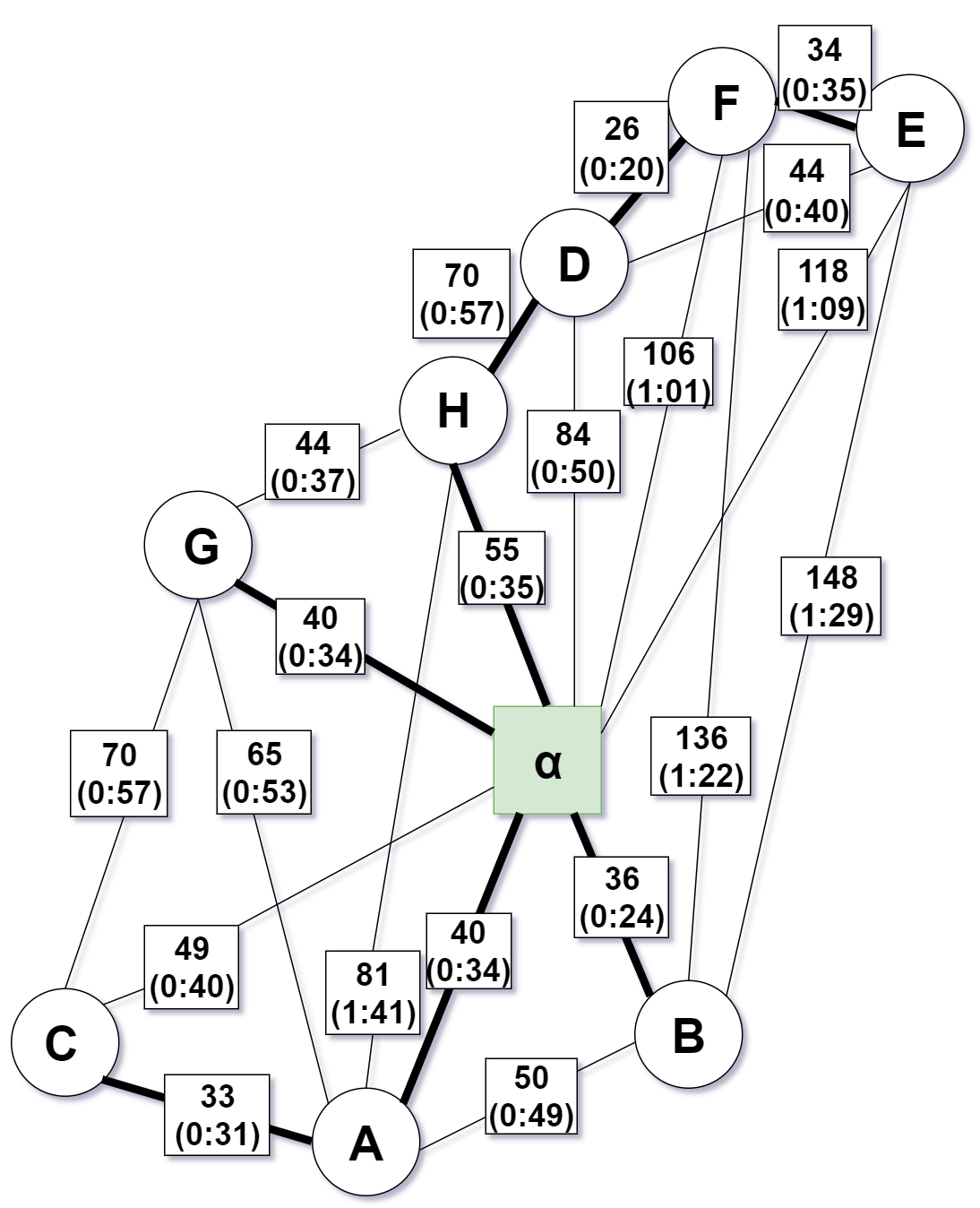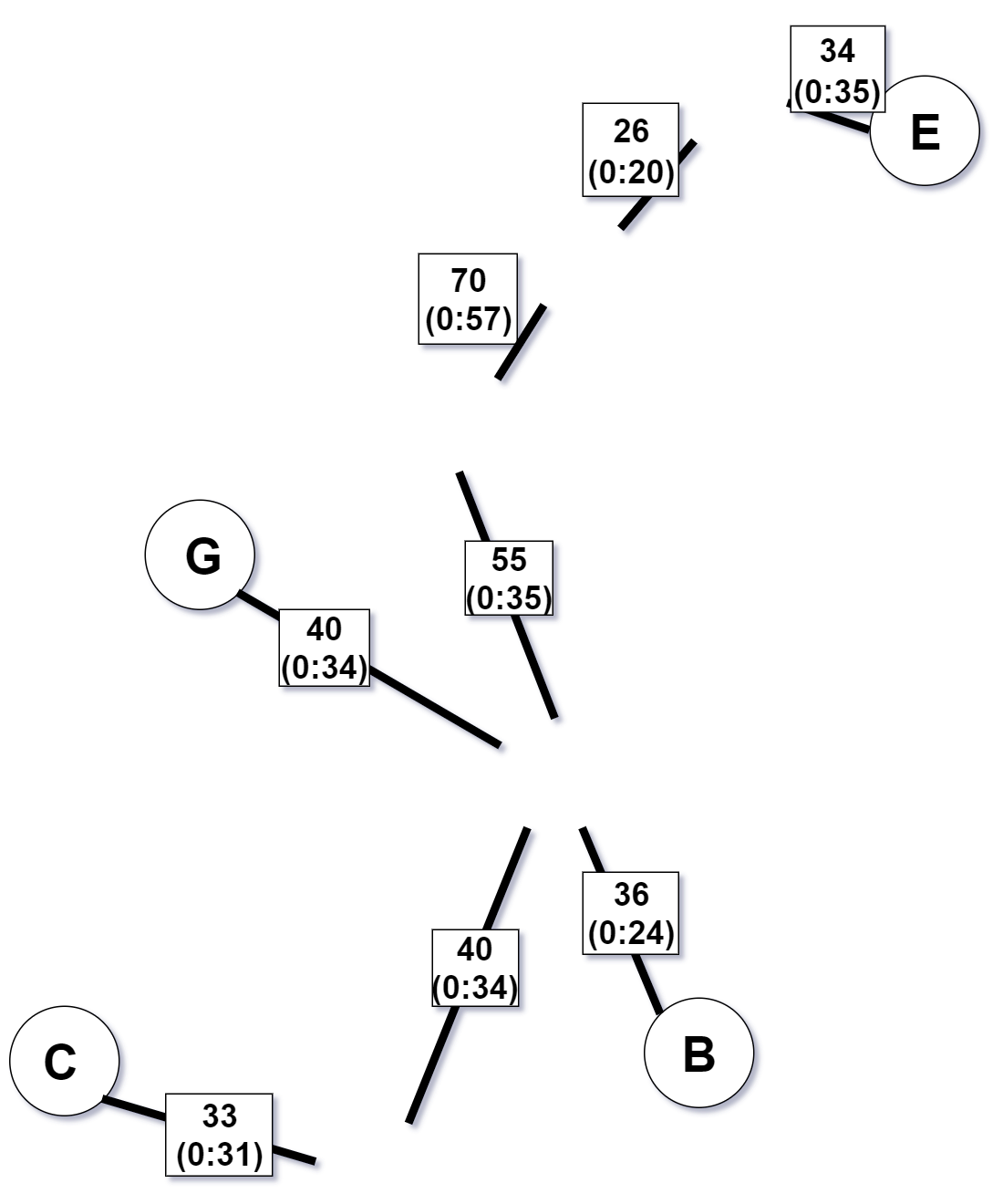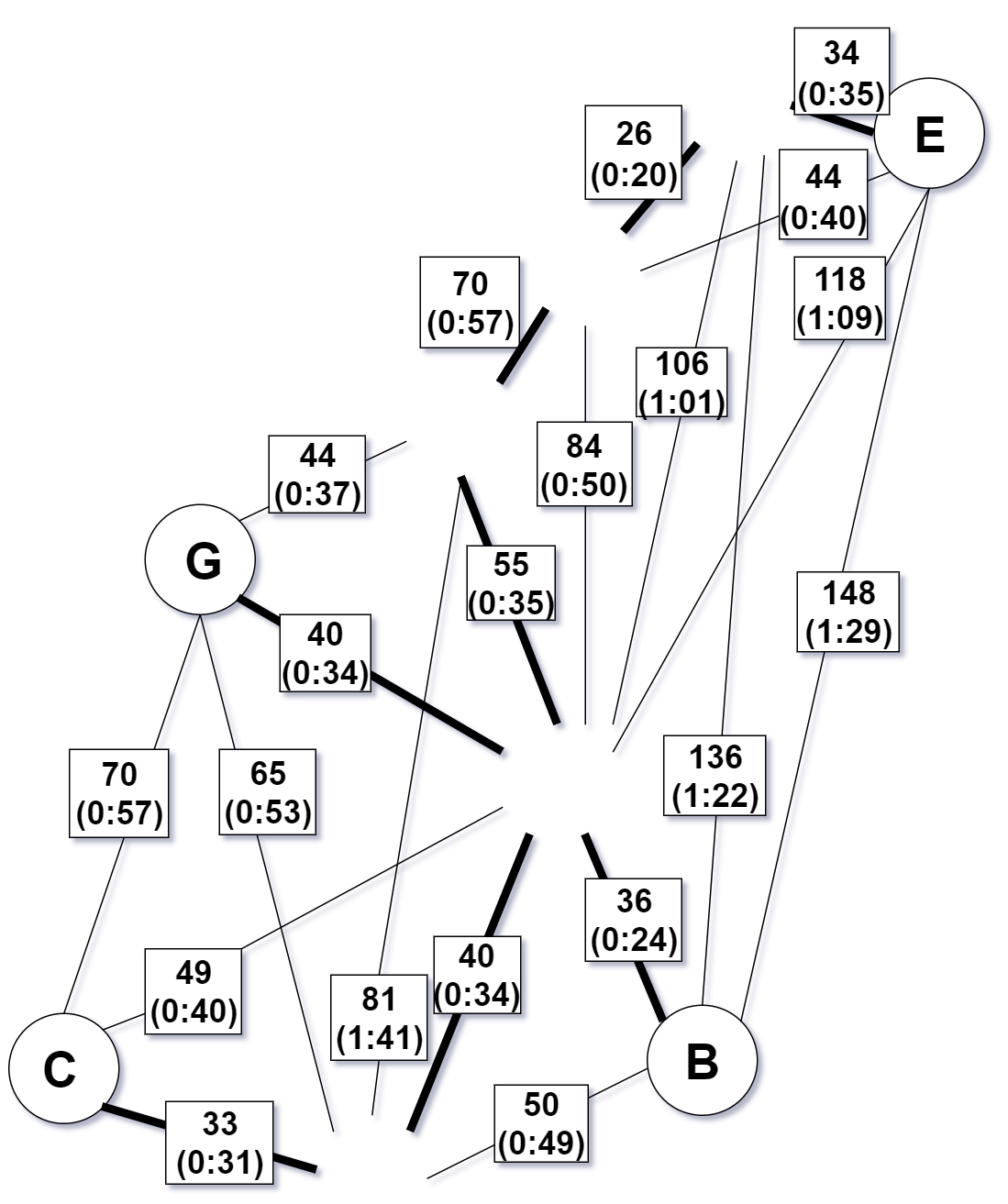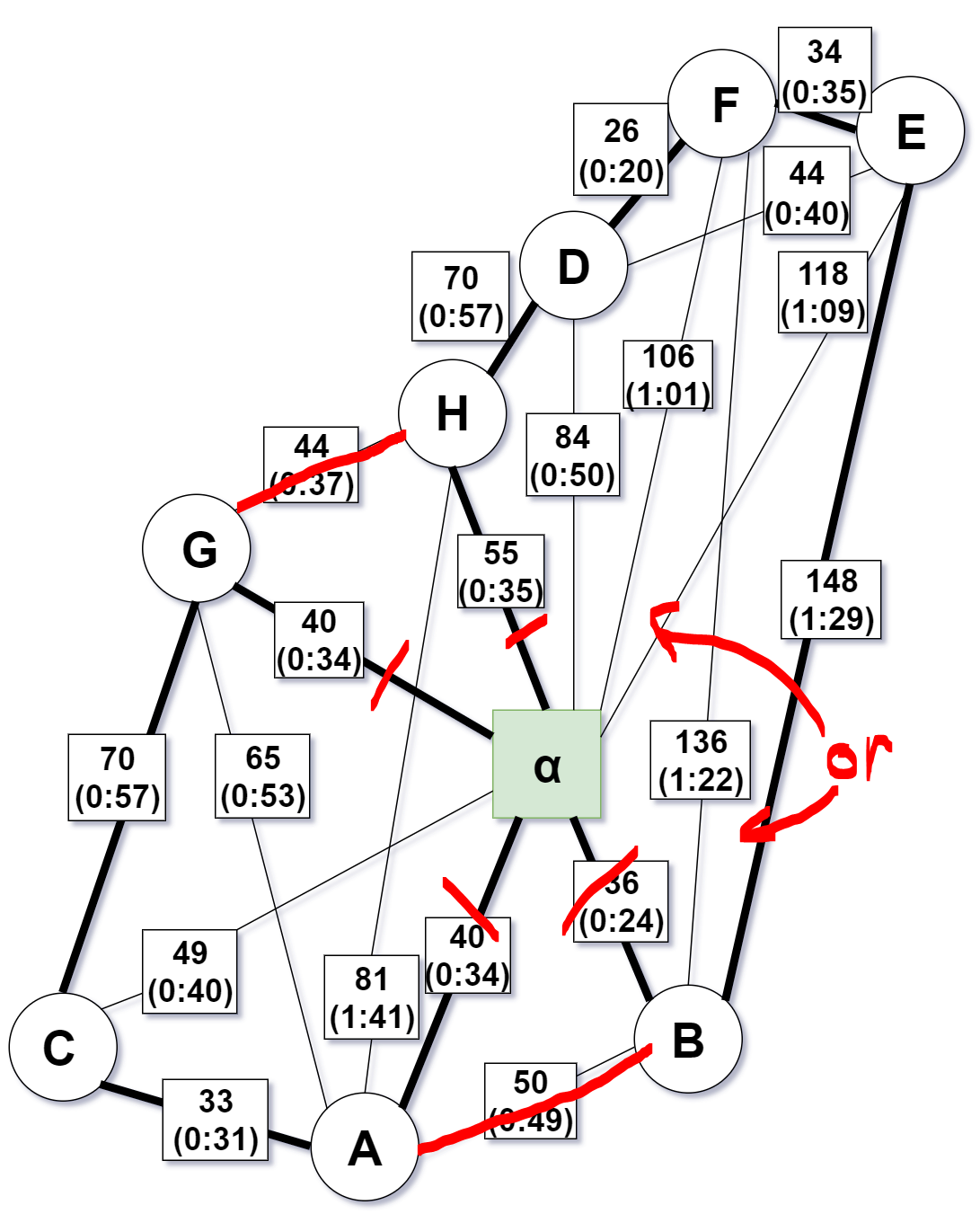I would like to calculate an eularian path using Christofides algorithm on this graph: (Focus on the first number in each box representing the distance)
Step 1 - Calculate minimum spanning tree $T$
Step 2 - Calculate the set of verices $O$ with odd degree in $T$
Step 3 - Form the subgraph of $G$ using only the vertices of $O$
This is starting to get confusing
Step 4 - Construct a minimum-weight perfect matching $M$ in this subgraph
Step 5 - Unite matching and spanning tree $T$ and $M$ to form an Eulerian multigraph
I am NOT satisfied
Did I do something wrong or did I simply just hit an sub-optimal solution. It is not hard to see that the Eulerian path easily could be improved by either connection $G \rightarrow H$ or $A \rightarrow B$ as illustrated underneath:











